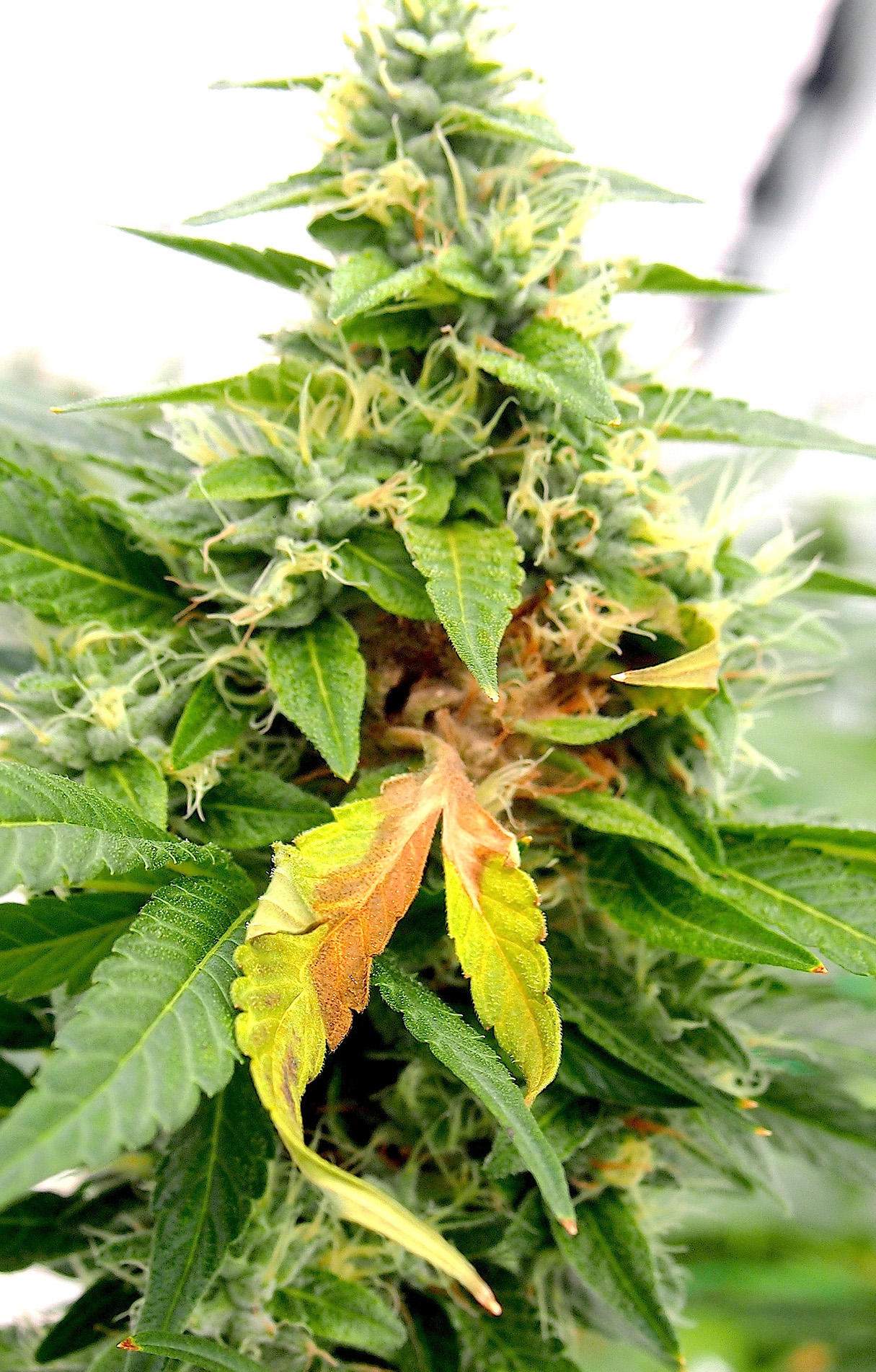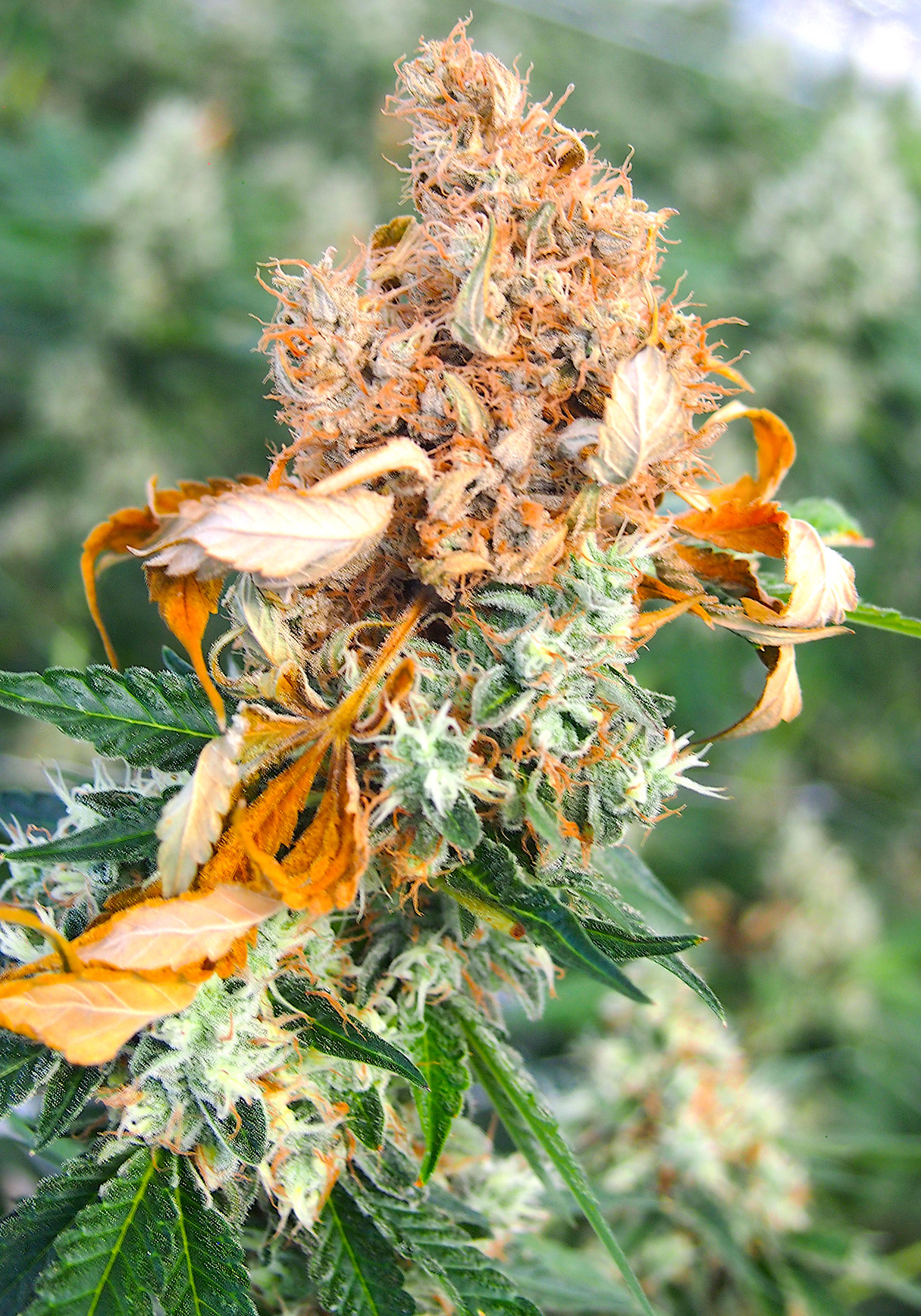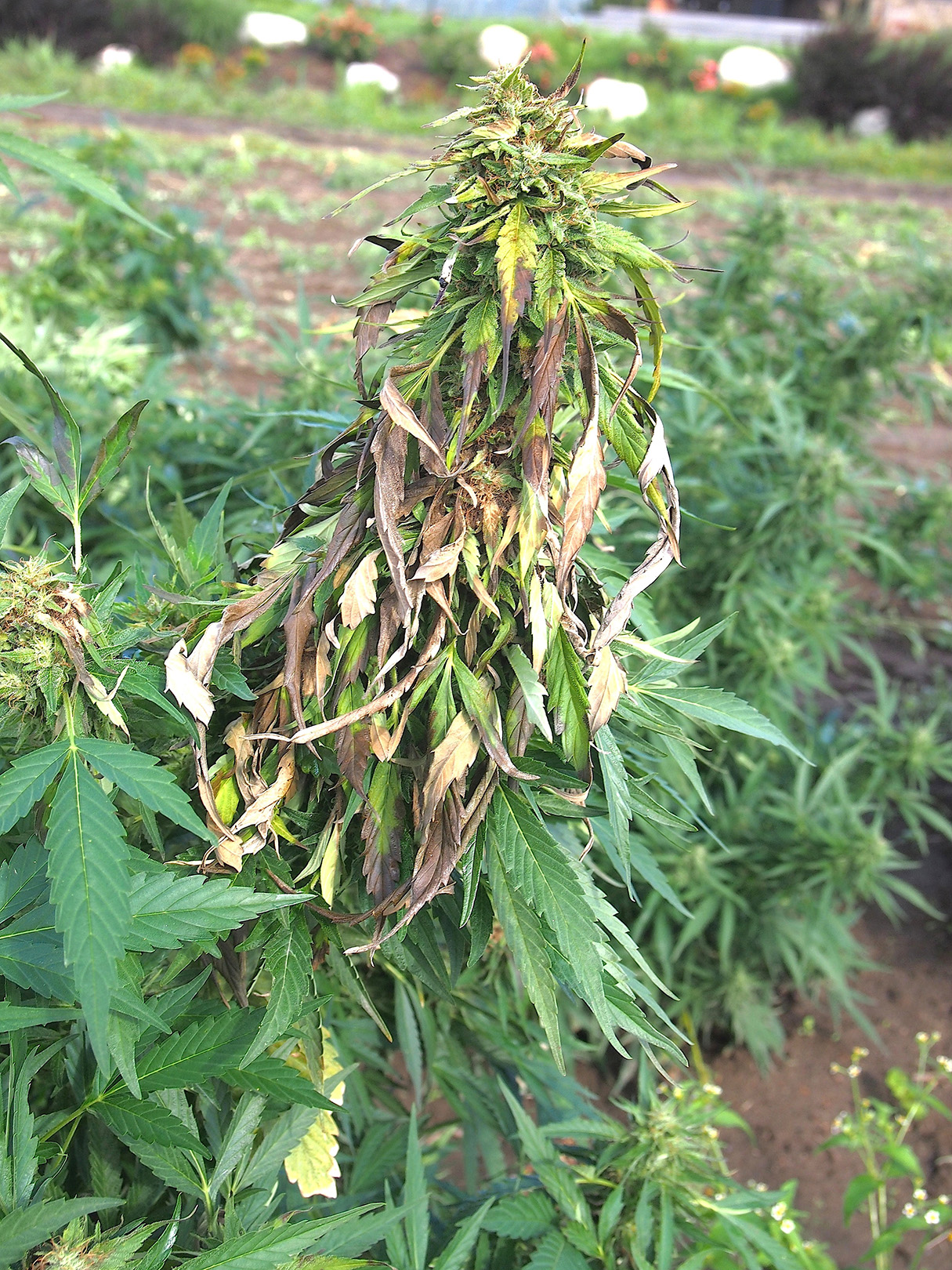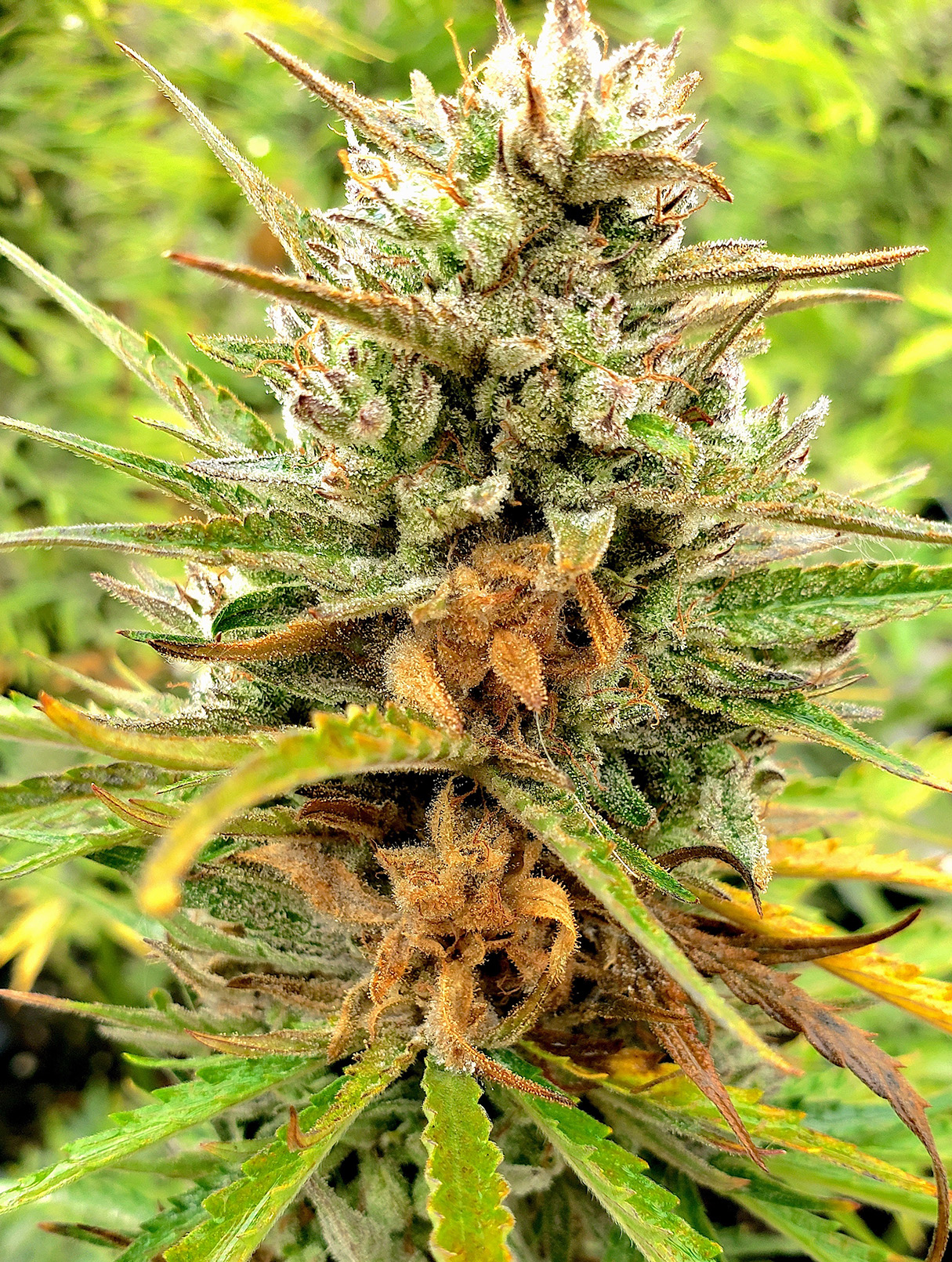Bud Rot
Botrytis spp.
 Yellowing leaf bract is an early symptom of infection of bud rot.
Yellowing leaf bract is an early symptom of infection of bud rot.

Necrotic areas forming in flowers as bud rot progresses.
Hosts
- Hemp
- Over 200 fruit and vegetable crops, perennials, and annuals
Symptoms
All plant parts (leaves, stems and flowers) can be affected; however, symptoms on flowers are most common on hemp. Initially, flower parts develop a water-soaked lesion that turns necrotic (dies). This symptom is then accompanied by a gray mat of mycelium surrounding and within flower clusters that forms thousands of spores.
Disease Cycle
Botrytis is a fungus that is present worldwide. It invades only through wounds or dying plant parts. The required conditions for spread and infection are cool temperatures (65-75°F), humidity, and moisture (rain or irrigation). Spores germinate and colonize the plant tissue, and these new infections produce thousands of additional spores which become airborne and continue the infection cycle.
Time for Concern
Bud rot may be an issue during flower-bud formation under prolonged (one week or longer) greenhouse humidity or cool outdoor rains.
When and Where to Scout
Look at buds and stems throughout the growing season.
Threat Level
Low in field production and high in greenhouse production.
Occurrence in Utah
The fungus, Botrytis cinerea, is present in most areas of Utah, but has not been detected as causing bud rot to hemp flowers. This disease has been detected in field grown hemp in Nevada and Oregon.
Management
- Prevent injury to hemp flower buds.
- Remove infected plants immediately to reduce inoculum. Wear a mask or be careful to not breathe spores as they may cause an allergic reaction.
- Sanitation is important. Disinfect planting and field tools and greenhouse spaces with a 10-15% household bleach solution.
- Allow proper spacing between plants in the greenhouse and in the field to promote airflow.
- Keep relative humidity in greenhouse to below 50%.
- When drying plant material, ensure proper airflow.
When to Consider Treatment
Infections cannot be cured, so prevention is key. There are currently no fungicides available for use against bud rot. Sanitation and pest monitoring should be primary tools in any hemp operation.
Look-alikes
Prior feeding by corn earworm and other post-harvest molds can look similar without a microscope to examine spores.
Photo Credits
- Zamir Punja, Simon Fraser University



